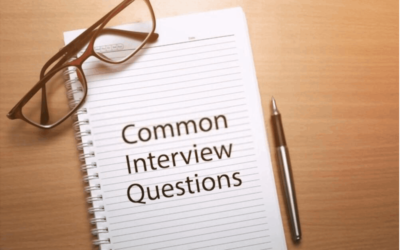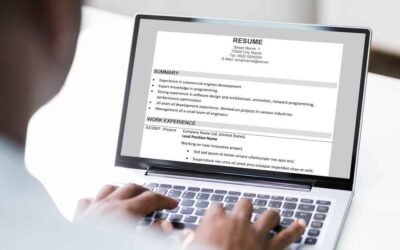Introduction
Do you have employment gaps in your CV? Don’t worry. You aren’t alone! Many people take a career break to start a family, travel around the world, or simply to enjoy and rediscover themselves. Some others decide to take time out following a redundancy.
Many people become anxious about jumping back onto the career ladder or worry that a lot would have changed while they were away, and their skills must be rusty. If you feel you’re in this situation, read on to know how to get a job, even if you have employment gaps.
First of all, you must know that employment gaps have become an acceptable norm in the job market. The challenge lies in ‘justifying’ your employment gap and convincing the hiring managers/recruiters that you are the perfect candidate for the job.
Instead of jumping straight back into whatever the first job that comes your way, take time to assess your situation first and decide what you want to do. What you did before your career break may not be the best job for you now.
1. Start by developing a personal profile
A personal profile or a personal statement is a small paragraph that concisely describes who you are, what are your skills and strengths relevant to the job role.
Write your personal profile at the top of your CV.
While the cover letter is long, the personal profile is shorter, just 4-5 sentences. Aim for anywhere between 50-150 words. Write the personal profile right under your name and contact info, just before the employment and education section.
Through a personal profile, you sell your best personality traits, experiences, and skills to the potential employer.
During your career break, you would have acquired some experiences, developed new skills, or uncovered strengths. Outline those and then chalk up the ones that are relevant to the job you’re applying for. Highlight these newly acquired experiences, strengths and skills in your personal statement.
Make sure your personal profile covers the following three things:
- Who are you?
- What can you offer?
- What are your career goals?
Weave these three aspects in a way that tells the recruiter/hiring manager that you will excel in the job role.
Personal profiles are the perfect way to grab the recruiters’/hiring managers’ attention and persuade them to continue reading your CV.
2. Possible reasons for employment gaps
A gap in employment can be majorly due to either personal or professional reasons such as:
- Taking time out to care for family and children
- medical or health related issues
- The effect of immigrating or relocating to a new country
- Pursuing further education or professional training
- Working on a startup or passion project
- Exploring a freelance career
Gaps in employment happen, and good hiring managers will realize this. Be upfront and comfortable with your reasons for the employment gap.
3. Create a strong functional CV
A Functional CV format is designed to demonstrate your skill set and prior achievements at other previously held jobs. It doesn’t follow the chronological CV format, that is well used amongst job seekers. The functional CV doesn’t show the time you’ve spent at a job. It is typically used by job seekers who either have employment gaps or change jobs very often.
Instead of listing jobs in chronological order, the CV body focuses on your abilities such as leadership, sales, programming, computer languages, team management, budgeting, etc. This way, you can align your competencies to the skills required for the job. It tells the recruiter/hiring manager about the skills you possess, and they won’t notice the times when you’ve been unemployed.
You need not include all your experiences on your CV, only the most relevant towards the job position. For example, if you are looking for a mid-management level position, an entry-level role from several years ago might not be very relevant.
At the same time, NEVER lie on your CV. All employers verify work history, and if you put false information on your resume, it will cause further problems.
Here are some ways you can re-design your CV if you have employment gaps:
1. Show your employment tenure as years
If you have been in a job role for over a year, instead of writing the tenure in month-year format, write it simply as years. For example, if you were a sales associate from May 2015 to August 2018 and then began your next job as sales manager from November 2018, you can write it as
- Sales Manager 2018-Present
- Sales Associate 2015-2018
2. Not just ‘paid employment’ counts towards the experience
One of the most common mistakes by job seekers is that they aren’t confident of what qualifies as work. Most people think only if you are getting paid for doing a task/activity, it qualifies as ‘work.’ However, that’s not the case nowadays.
If you did anything that helped you develop some skills that might be useful for your new position, show it in your CV. Include all types of experiences and skills gained during the employment gap.
It could be anything – volunteering, freelancing, consulting, traveling, skills training, or passion project. All those counts as work and can be included in your CV. Recruiters/hiring managers want to know more about you – what you did when you did it and how that helped you grow as a person and as a professional.
3. Explaining your employment gaps at the interview
Explaining a gap in employment during an interview can be tricky. The best approach is to address it in a direct and straightforward manner.
Be honest
Honesty is the best policy. Whatever your reason for taking a break from employment, be honest about it. There is no need to go into too many details, but lying about your reasons makes the hiring manager question your integrity. It is okay to be discrete.
Don’t extend your period of employment to cover up the gaps. All employers conduct background checks to verify your employment history. They would know it sooner or later.
Be prepared
Prepare a simple, honest, and straightforward explanation of why there is/are employment gaps. Keep your response short and pertinent, and be comfortable answering any follow-up question from the interviewer.
If you have prepared an explanation in advance, you won’t be caught off guard.
After you have explained your reasons for the break, the next important thing is to make it clear to the interviewer that the reason for your time off has been resolved and you are fully committed to your career again.
Also, do spend some time researching about the company, industry, and latest trends. This will demonstrate your passion for the career.
Stay optimistic
There is no need to apologize for your employment gaps or negatively characterize your former employer.
Keep all your responses positive. Instead of using “can’t”, “didn’t”, say “I decided”, “I chose”, I wanted to”. This shows you took deliberate decisions and are not a victim of circumstances.
The most common argument that comes is related to being laid-off. Of course, you didn’t want to leave your job, but you were forced to leave due to restructuring. In that case, the best way to explain the employment gap is that you were actively looking for the right job but didn’t want to take up anything. This shows you weren’t desperate but instead waited for the right opportunity.
Remember, winning the sympathy of the interviewer and making him/her feel sorry for your situation won’t get you the job. Your ability to convince them that the employment gap hasn’t made you rustic but further improved your skills.
If the employment gap wasn’t voluntary (maybe you were laid off due to restructuring), focus on what you learned from the experience and what steps you’ve taken to implement positive changes to your career to improve your overall performance.
Focus on your skills
Talk about how your strengths and skills are better suited to the job. Wherever possible, provide evidence of your skills, and positive recommendations from your previous jobs.
Mention different activities you’ve been involved in during the employment gap that helped you gain specific skills. Whether it was volunteer work, workshops, coursework, consulting, or freelance work, make sure you emphasize enough about the skills and strengths you built in this time.
Show enthusiasm
Finally, exude enthusiasm for returning to work and make a very strong case for why your target job would be exciting for you and an excellent fit.
Conclusion
Remember, it is not unusual to have employment gaps. The only thing that pulls you down is if you are unable to explain the gaps. Employers want to see two main things: relevant skills for the job and your enthusiasm to re-enter the workforce. So, be honest and show you are ready. That way, you’ll have nothing to worry about.




